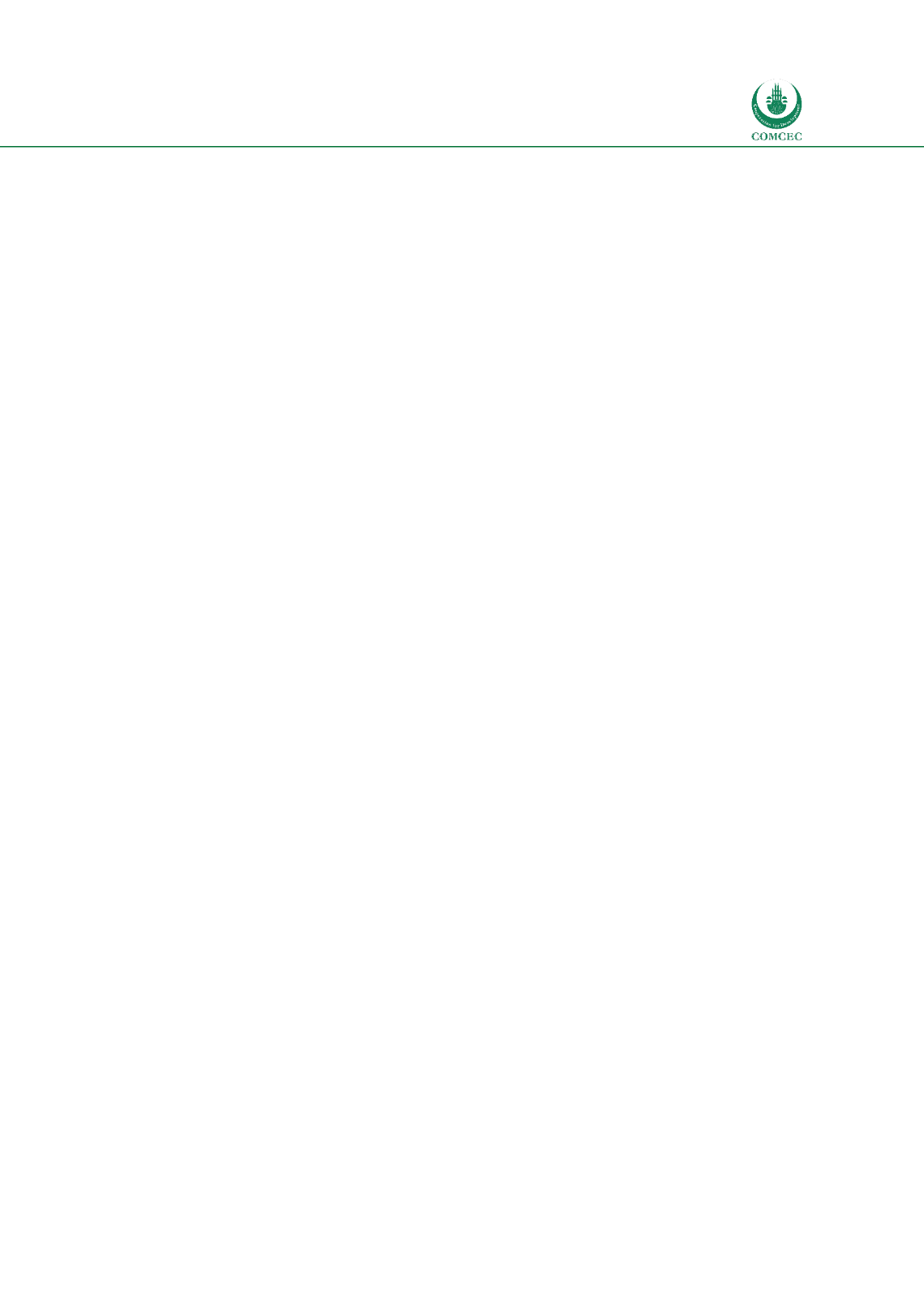

National and Global Islamic Financial Architecture:
Prolems and Possible Solutions for the OIC Member Countries
129
Tax regimes and impact on Islamic Finance
The DGID (The Direction of Taxes and Properties ), a branch of the Ministry of Finance,
included the waiver of double taxation for Murabaha products used by financial institutions in
case of the sale of an asset in its Tax Law of 2013. This was an indication from the authorities
of the government’s will to encourage the development of Islamic finance in the country.
However, the taxation system has no specific dispositions for sukuk despite the issuance of a
sukuk by the government of Senegal in 2014. When Senegal issued the sukuk, the CREMPF (the
Central Bank body regulating Financial Markets) had to work with ICD of Islamic Development
Bank Group to adjust the rules and adapt these to fulfill the requirements of the transaction to
issue the sukuk.
Dispute settlement/conflict resolution framework and institutions
The actions taken by the government to create a sustainable and easy way to do business are at
the core of the national strategy. Therefore, disputes including commercial ones are settled in
civil courts. Nevertheless, the Decree-Law 2014-1653 of 2014 tackles the issue by establishing
an ombudsman that settles conflicts involving banks, microfinance institutions and post
offices. This law treats Islamic and conventional finance equally. As the current law is inspired
by the French constitution and laws, it does not mention Shariah. As such, Islamic finance is not
treated differently and falls under the current laws. Furthermore, the professionals in the legal
system lack training to deal with Islamic finance issues.
Bankruptcy and resolution of banks
Under Senegalese law, financial institutions that wish to withdraw their license must notify the
Minister of Economy and Finance and the request is processed by the Central Bank. There are
no specific resolution mechanisms for Islamic financial institutions. The judiciary is not
equipped with the proper instruments or training to deal with defaults sukuk for resolving
either domestic or cross border issues.
4.9.2. Financial System Regulation and Supervision Framework
The Central Bank of West African States BCEAO allows Islamic banking in its regulatory
framework under the label “financial institutions not using interest rates”. However, the
regulations do not differentiate between conventional and Islamic finance. Licensing
agreements are the same for Islamic and conventional finance. Even though BCEAO has been a
member of IFSB since 2012, IFSB standards are not yet applied to Islamic banks. There are no
sharia compliant instruments that can meet Basel III tier 1 or 2 capital requirements. Even
though a few conventional banks applied for Islamic windows, the Central Bank has not given
any authorizations. There are no financial soundness indicators for Islamic banks.
Inter-African Conference of Insurance Markets (CIMA) established in 1992 regulates and
supervises the insurance industry under its regulatory body Regional Commission of Insurance
Control (CRCA) covering 14 West African and Central countries including Senegal (Allen et. al.
2011). CIMA uses conventional insurance codes as basis of its regulation. Without the
authorization of CIMA, no Takaful activities can be taken. This may require adding takaful
features in the existing codes.
















